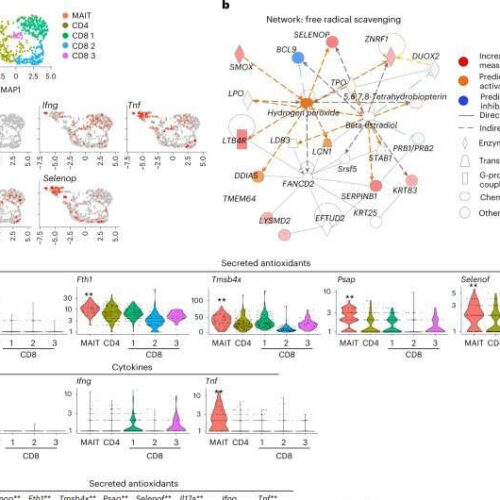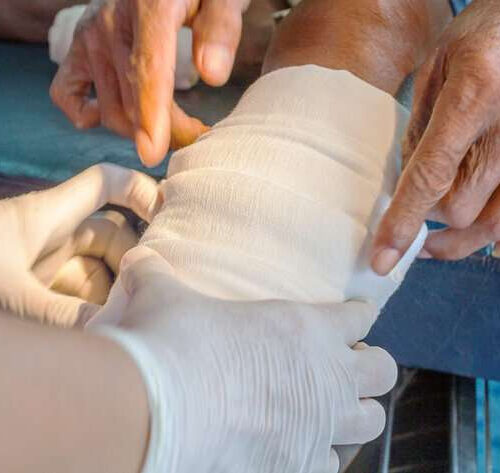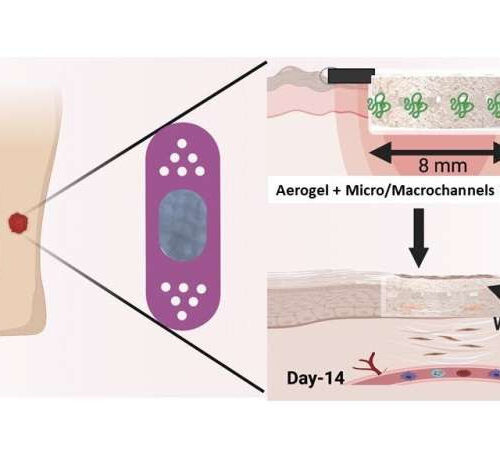AMERICAN SOCIETY FOR MICROBIOLOGY Washington, DC – November 30, 2022 – Antibiotic treatment disrupts the balance of beneficial and harmful bacteria in a person’s gut. That disruption can lead to the overgrowth of fungal species in the gut mycobiota, including the common intestinal yeast Candida albicans. However, researchers only have a limited understanding of the underlying mechanisms. ...
Scientists uncover novel DNA repair mechanism for key cancer target
THE FRANCIS CRICK INSTITUTE Francis Crick Institute press release Scientists at the Francis Crick Institute, in collaboration with Artios, have identified how an enzyme involved in DNA repair (POLQ), becomes vital to the survival of certain cancers, if the cancer cells lose the ability to use a more common method of DNA repair. The work...
Closing the loop to target brain glioblastomas
by Joshua Stewart, Georgia Institute of Technology Credit: Science Advances (2022). DOI: 10.1126/sciadv.add2288 “Closing the loop” has become one of the jargony cliches of the business world. But in the world of cancer immunotherapy, closing the loop could be an innovation that unlocks powerful therapies for hard-to-treat brain cancers called glioblastomas. Researchers at Georgia Tech and Emory...
Researchers discover how immune cells prevent cognitive decline
by Rutgers University MAIT cells express genes encoding secreted antioxidant molecules. Credit: Nature Immunology (2022). DOI: 10.1038/s41590-022-01349-1 Could the underproduction of poorly understood immune cells contribute to Alzheimer’s disease and other forms of cognitive decline? A Rutgers study in Nature Immunology suggests it may—and that increasing these cells could reverse the damage. Rutgers researchers deactivated the gene that produces...
The brain’s immune cells can be triggered to slow down Alzheimer’s disease, study shows
by Lund University Visual representation of the role of microglia activation in longitudinal accumulation of amyloid and tau aggregates. When microglia are in a homeostatic state, they do not protect against the accumulation of amyloid and tau aggregates, which increase over time in individuals at risk of developing Alzheimer’s disease (AD) (a). In contrast, when...
New material helps diabetic wounds heal quickly
by Jane Icke, University of Nottingham Credit: University of Nottingham Scientists have discovered a new material that can be applied to diabetic wounds to heal them faster with just one application. Researchers from the University of Nottingham have discovered a new class of polymer that can provide instructions to both immune and non-immune cells to...
Microchannel-containing nanofiber aerogels with small protein molecule enable accelerated diabetic wound healing
by Terasaki Institute for Biomedical Innovation Fibrous aerogels contain micro/macrochannels which facilitate the ability to heal chronic diabetic wounds. A novel protein incorporated into the aerogel provides anti-microbial capabilities and promotes wound tissue coverage and new blood vessel formation. Credit: Terasaki Institute for Biomedical Innovation (TIBI) A collaborative team of scientists from the Terasaki Institute...
Novel device detects COVID-19 antibodies in five minutes
by Ricardo Muniz, FAPESP Illustration of the structure of zinc oxide modified with the spike protein and its interaction with antibodies in the sample. The novel method detects COVID-19 antibodies in five minutes. Credit: Karin Regina Leite de Oliveira/DK design Rapid, cheap and accurate tests continue to be essential for epidemiological surveillance and for health...
Study examines why overweight people are more susceptible to illness
by Technical University Munich SAT and VAT are characterized by different transcriptomic signatures. (a) MDS plot displaying the first two dimensions of the data (n = 99). (b) Hierarchical clustering of SAT and VAT samples based on euclidean sample distances (n = 99). (c) Volcano plot showing differentially expressed genes between SAT and VAT (n = 99). (d) Dotplot displaying the...
Novel research demonstrates new method of spinal cord tissue repair
by University of Limerick a Synthesis schematic of gel:HA:PEDOT-NPs scaffolds. Incorporation of PEDOT NPs into Gel:HA hydrogel and processing by means of lyophilisation develops porous scaffolds, (image created with BioRender.com). b SEM images of synthesized PEDOT NPs. c DLS measurement of PEDOT NPs in the hydrodynamic state. Credit: Biomaterials Research (2022). DOI: 10.1186/s40824-022-00310-5 Unique new material developed...








